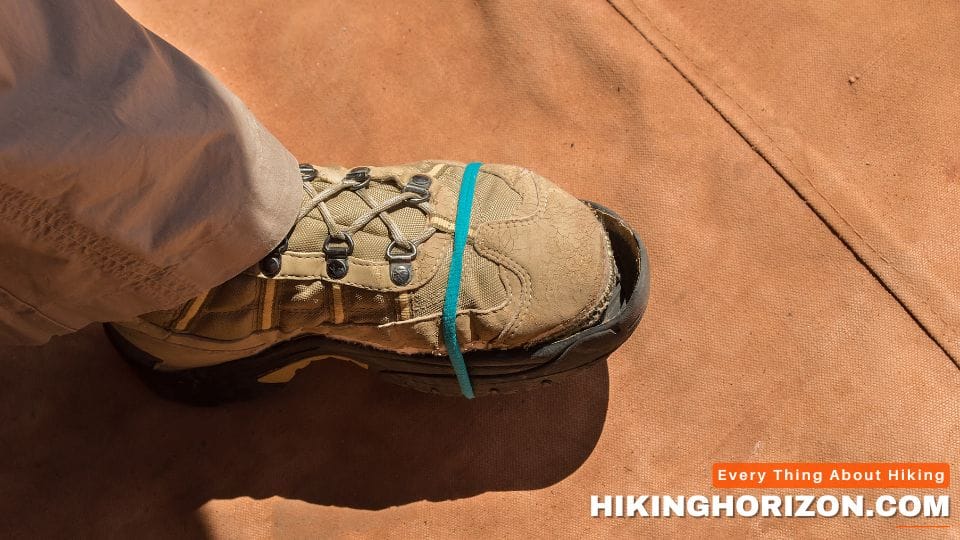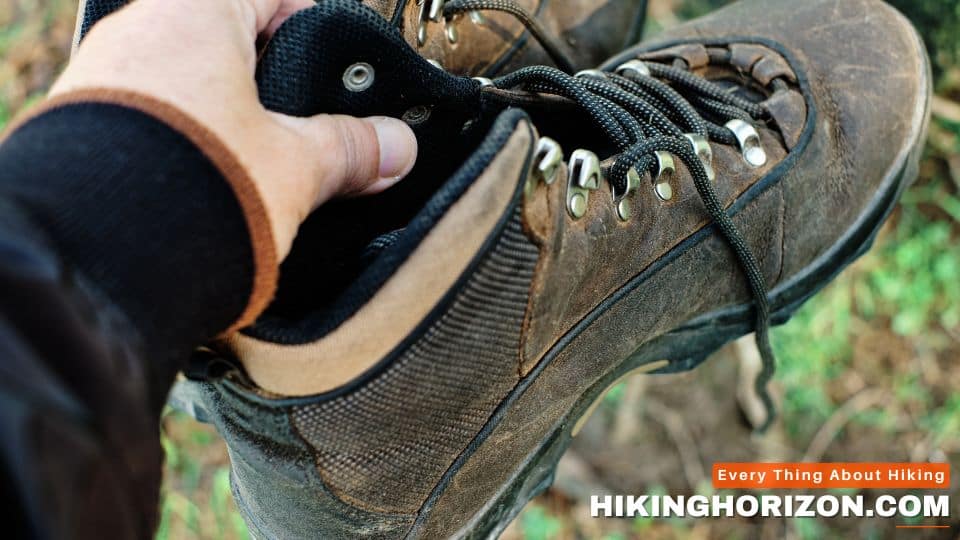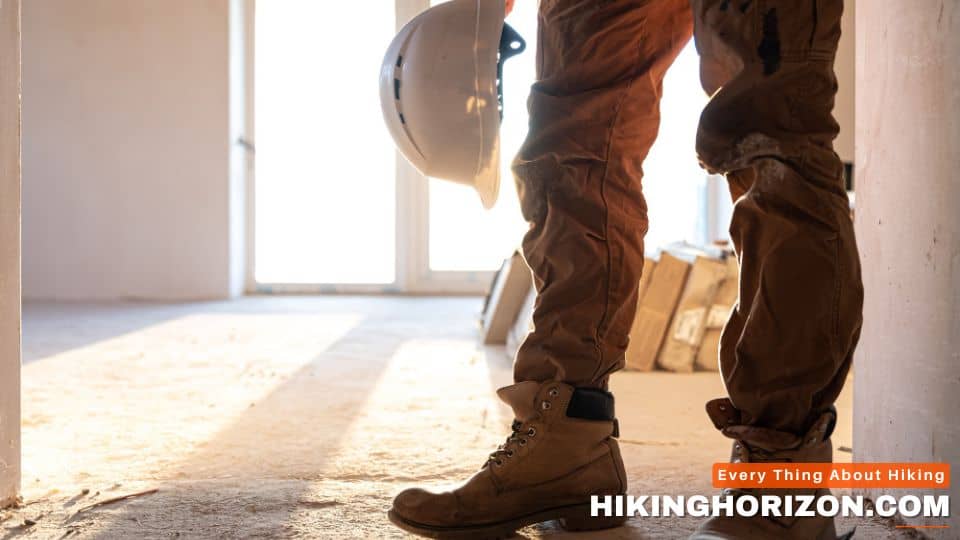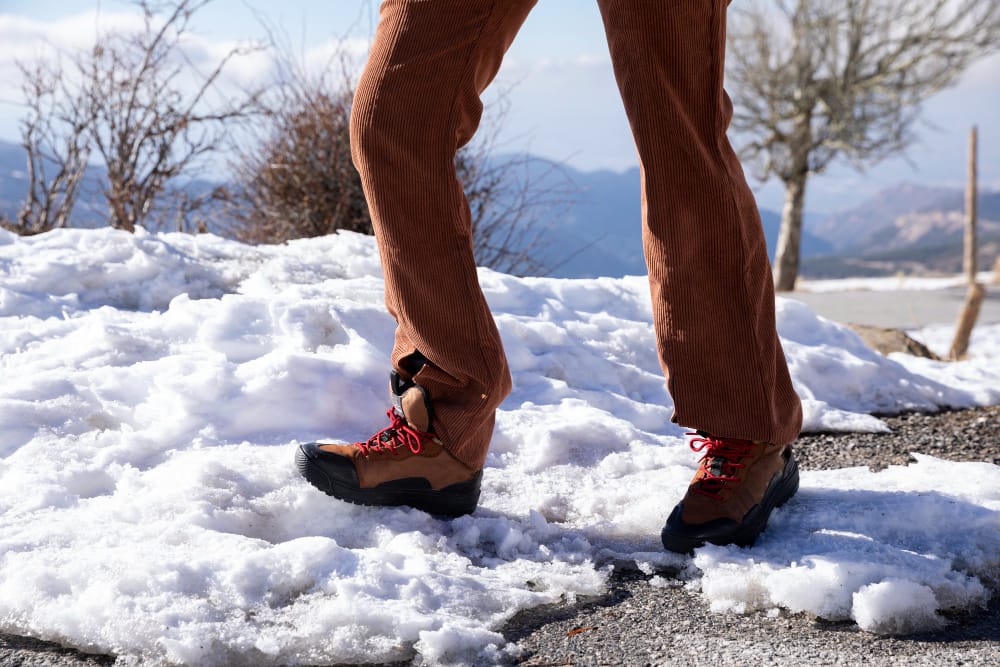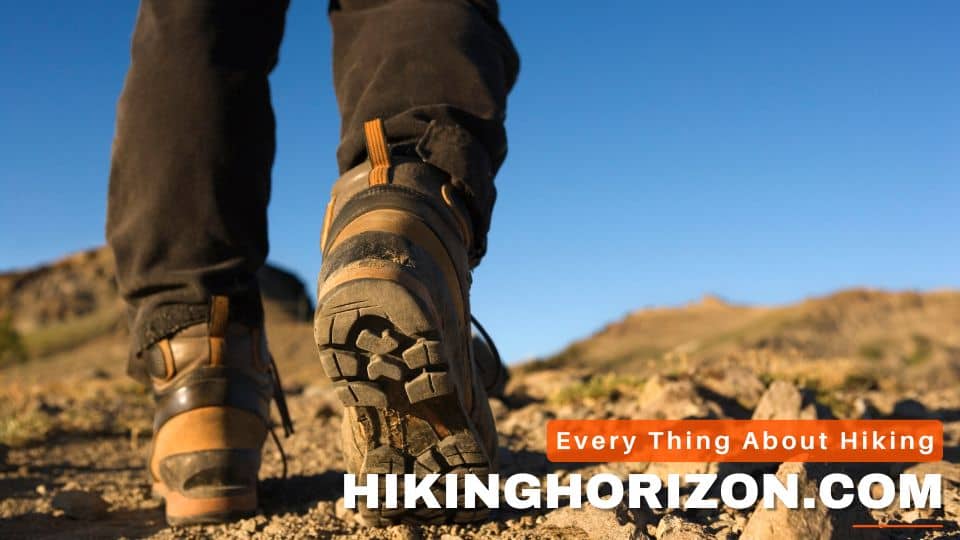
Hiking is a popular outdoor activity that allows people to explore nature, get exercise, and enjoy fresh air. However, hiking on uneven trails and rough terrain can put a lot of stress on your ankles and feet. This leads many hikers to wonder—do you need ankle support for hiking?
The debate around ankle support and hiking boots is a controversial one. Some hikers swear by heavy hiking boots with thick ankle support to stabilize their ankles. Others prefer lightweight trail runners that allow maximum ankle flexibility and range of motion.
So which is best for preventing ankle injuries on the trail—restriction or freedom of movement? In this comprehensive guide, we’ll explore the pros and cons of hiking boots versus shoes when it comes to ankle support. You’ll learn:
- Whether ankle support is necessary for hiking safety
- What features to look for in hiking footwear
- How to strengthen your ankles for the trail
- Expert tips for preventing ankle injuries
By the end of this guide, you’ll know how to choose the right hiking footwear for your ankles—and feel confident hitting the trail!
Key Takeaways: Do You Really Need Ankle Support For Hiking?
- Ankle support itself does not differ between hiking boots and trail runners, according to research. The rigid materials in boots only restrict motion, they don’t actually stabilize the joint.
- Multiple studies found no difference in ankle injury rates for hikers wearing boots versus lightweight hiking shoes. So boots don’t provide more protection.
- Consider the terrain, pack weight, hike duration and your ankle health when choosing footwear. Very strenuous hikes may require more support.
- Focus on building ankle strength through targeted exercises and mobility training to prevent sprains vs relying on supportive footwear alone.
- Smart hiking techniques, caution, and trekking poles can further help you avoid ankle rolls and stay injury-free.
- Ankle braces allow you to get support with lightweight trail runners, giving you the best of both worlds.
Table of Contents
Hiking Shoe vs. Hiking Boot: Is There Really A Difference in Ankle Support?
Many hikers assume sturdy hiking boots provide more ankle stability and injury prevention versus lightweight shoes. But is this actually true when it comes to ankle support?
Do Hiking Boots Provide More Actual Ankle Support?
Hiking boots are designed with extra material around the ankle collar and may extend above the ankle joint. They often have rigid soles and shanks to control the torsional flex of the foot. These features aim to restrict ankle movement and provide lateral stability.
However, research suggests ankle support itself is not increased in hiking boots compared to trail runners.
In a 2016 study, researchers measured ankle range of motion while wearing high-top and low-top hiking shoes. They found no significant difference in ankle flexibility between the two styles.
According to podiatrist Dr. Cunha, “There is no difference in ankle support between a hiking shoe and a hiking boot”. The rigid soles and materials surrounding the ankle offer a feeling of support but do not actually stabilize the joint.
Do Boots Prevent Ankle Injuries Better Than Trail Runners?
If hiking boots don’t provide more actual ankle support, do they still prevent ankle injuries better than low shoes?
Multiple research studies suggest the opposite—hiking boots do not reduce ankle sprains compared to trail runners.
A 2018 Clinical Journal of Sports Medicine meta-analysis analyzed data from 13 different studies with over 3,500 participants. Researchers found no difference in ankle injury rates between hikers wearing boots versus low shoes.
This suggests the height of a hiking shoe’s ankle collar does not actually prevent twisted ankles. According to physical therapist Parker Green, “Ankle support itself is a myth. The material around your ankle in a hiking boot really provides no additional support or stability”.
Why Don’t Boots Provide More Ankle Injury Protection?
If hiking boots don’t stabilize ankles or prevent sprains, why not?
Boots restrict natural ankle range of motion, which can weaken stability muscles and ligaments over time. This may increase injury risk compared to shoes that allow freedom of movement.
Also, boots with tall ankle collars can create a “false sense of security”. Hikers feel their ankles are supported when in reality, they’re not. This may lead them to hike more recklessly.
Green explains, “Thick boots cause you to hike with less caution. This actually increases risk of rolling an ankle on uneven terrain”.
Related Article: How Should Hiking Boots Fit? [6 Top Tips On Hiking Shoes Size]
Factors that Determine Ankle Stability
| Foot Structure | Function |
|---|---|
| Bones | Provide structure and connection points for muscles/ligaments |
| Ligaments | Connect bones and provide resistance to prevent excessive movement |
| Tendons | Attach muscles to bones |
Do You Really Need Ankle Support For Hiking?

Based on the research, it seems ankle support itself is not needed for safe hiking. In fact, flexible trail running shoes may be better for overall ankle health.
However, there are some important caveats to consider:
Hiking Terrain, Weight, and Intensity Matter
Very rough, technical terrain with loose rocks or rugged mountain hiking requires stability from stiff, supportive soles. Heavier packs also put more pressure on ankles, making lateral support helpful.
So if you’re hiking extremely challenging trails or backpacking with a heavy pack, hiking-specific boots make sense. But for simpler day hikes, light trail runners are sufficient.
The intensity and duration of your hike is also a factor. If you are power hiking for many miles, your ankles may become fatigued, making supportive boots a smart choice for injury prevention.
Prior Ankle Injuries
If you have a history of sprains or ankle instability, extra support could be beneficial while your ankle regains strength. Ankle braces, tape, or boots can provide added peace of mind after an injury.
Hiker Experience Level
Those new to hiking may feel more comfortable in hiking boots at first. But as you log miles on the trail and improve balance and agility, you can graduate to more minimal shoes confidently.
Consider your individual hiking needs and preferences when deciding if you require ankle support. Don’t assume you must wear heavy boots just because they seem safer.
Is hiking bad for ankles?

Many hikers worry that spending miles on uneven trails and rugged terrain may be bad for ankle health. However, hiking itself does not damage ankles when done safely. In fact, it can strengthen ankles if you hike smart.
Regular hiking encourages stability and mobility when you walk carefully over rocks and logs. It also builds lower leg and ankle muscles to provide support. Starting on simpler trails and using trekking poles aids stability as you log miles. Wearing properly fitted hiking boots or shoes protects ankles from impact too. While ankle sprains are risky, gradual training and caution make hiking safe for ankles.
The Truth About Ankle Support Myth in Hiking
Many hikers believe sturdy hiking boots provide far more ankle support and stability than lightweight trail runners. However, scientific research reveals this is a myth.
Studies comparing ankle motion in hikers wearing boots versus shoes show no difference in actual ankle support. The rigid materials around the ankles in boots just limit mobility, they don’t stabilize joints. Ankle injury rates are the same with boots or trail runners. While it’s a common perception that tall, stiff hiking boots prevent sprains better, it’s not true according to science. Don’t rely on footwear alone for support. Focus instead on building ankle muscles and tendons through training. This provides true stability that helps prevent sprains on rugged hikes. Be wary of hiking boot marketing perpetuating the ankle support myth.
Ankle Injuries Common in Hiking
| Injury | Description |
|---|---|
| Ankle sprain | Overstretched or torn ligaments leading to pain, swelling, bruising |
| High ankle sprain | Injury to ligaments connecting tibia and fibula resulting in longer recovery |
| Achilles tendonitis | Inflammation of Achilles tendon causing pain and stiffness |
| Plantar fasciitis | Inflammation of plantar fascia leading to heel/arch pain |
Do all hiking boots provide ankle support?

With their stiff materials surrounding the ankles, it seems logical that hiking boots would provide good ankle support. But the truth is, not all boots sufficiently stabilize ankles.
Research shows ankle support itself does not vary between different hiking boots and shoes. Just having a rigid frame and high ankle collar does not mean a boot will effectively support your ankle joint when hiking. When shopping for boots, look for secure lacing, torsional stability, and a molded ankle collar. Try on different boots for fit and comfort around your ankles. Don’t assume ankle support is guaranteed from any pair of hiking boots. Focus on building your own ankle strength as well for stability.
Ankles boots or hiking poles ─ which provides good ankle strength?
To build ankle stability for hiking, is it better to wear supportive ankle boots or use trekking poles on the trail? The answer is…neither alone provides true ankle strength!
While ankle boots may feel supportive, they don’t actually make your ankles stronger or more stable, based on research. And poles improve balance but don’t strengthen ankles like targeted exercises do. For good ankle strength, you need focused training. Do alphabet exercises, single-leg stands, calf raises, hops, and more. This builds the muscles, tendons and ligaments around the ankle joint for true stability as you hike. Poles and proper footwear aid balance on the trail, but prioritizing daily strength training gives you the most ankle protection. Don’t rely on equipment alone.
Choosing The Right Hiking Footwear to support ankles while hiking

If you want hiking footwear with ankle stability features, here’s what to look for:
Rigid Midsole
A firm midsole prevents the arch from collapsing inward and resists torsional twisting. Materials like EVA foam with shank plates provide support.
Ankle Collar
Padded ankle collars hug the ankle bones to restrict lateral movement. High-top boots with collars above the ankle joint supply the most coverage.
Lacing System
Boots with speed lacing, multiple lace loops, or lace locking hardware allow you to customize ankle tightness and improve stability.
Avoid ultralight trail runners or highly flexible boots without stability features if you want ankle support. And consider adding an ankle brace under your boot for maximum restriction and compression.
Develop Ankle Strength to Prevent Hiking Injuries
Rather than relying on footwear for support, the best way to prevent ankle sprains is strengthening your muscles, tendons, and ligaments through training.
Before each hiking season, devote time to improving ankle stability with these effective exercises:
Alphabet Ankles
Trace the letters of the alphabet with your big toe, keeping your foot flat. Go through the alphabet 1-2 times per foot.
Towel Drag
Sit on the floor with legs outstretched. Place a towel under the ball of each foot and scrunch your toes to drag it towards you.
Balance Board
Stand on a rigid balance board or wobble cushion on one leg. Maintain your stance for 30-60 seconds without wobbling.
Aim for 3 sets of 15-20 reps of each exercise several times per week. You’ll boost strength and mobility in your ankles and lower legs for stability on the trail.
Other Ankle Strengthening Exercises
Here are some additional exercises that can improve ankle stability:
- Calf raises
- Resistance band rotations
- Hopping drills
- Single-leg deadlifts
- Lunges
- Foam rolling
Focus on moves that strengthen all muscles around the ankle joint through full ranges of motion.
Tips for Preventing Ankle Injuries When Hiking

Focusing on building ankle strength is key for reducing sprains. But other strategies can further help you avoid rolled ankles when hiking:
- Stretch calves, ankles, and feet pre-hike
- Take a break to re-tighten laces if feet swell
- Wear hiking socks that wick moisture to prevent friction
- Use trekking poles for stability on steep, loose terrain
- Be mindful of footing and avoid stepping on uneven surfaces
- Go slowly on descents and don’t jump between rocks or logs
- Stop hiking if pain or tiredness sets in
- Consider an ankle brace after prior sprains until fully healed
Simply wearing supportive footwear isn’t enough to protect ankles by itself. Developing hiking experience, balance skills, and leg muscle strength may be more important.
Best Hiking Boots for Ankle Support

Selecting the right hiking boot for ankle support depends on your needs and preferences. Here are some top-rated boots for both high and low levels of ankle support and those with adjustable ankle support.
Top Hiking Boots for High-Level Ankle Support
- Lowa Renegade GTX Mid – These boots are a great all-around choice for hikers who want a balance of ankle support, comfort, and durability. They have a supportive ankle cuff and a stiff shank, which help to prevent ankle injuries. They also have waterproof Gore-Tex lining, which keeps your feet dry in wet conditions.
- Salomon Quest 4 GTX Mid – These boots are a good choice for hikers who are looking for a boot that is both supportive and comfortable. They have a supportive ankle cuff and a cushioned footbed, which help to reduce fatigue. They also have waterproof Gore-Tex lining, which keeps your feet dry in wet conditions.
- La Sportiva Bushido II Mid GTX – These boots are a great choice for hikers looking for a lightweight and supportive boot that can handle technical terrain. They have a supportive ankle cuff and a stiff shank, which help to prevent ankle injuries. They are also made with waterproof Gore-Tex lining and a Vibram Megagrip outsole, providing excellent traction on various surfaces.
- Asolo Fugitive GV Mid GTX – These boots are a good choice for hikers who are looking for a boot that is both supportive and breathable. They have a supportive ankle cuff and a Gore-Tex Performance Comfort lining, which allows moisture to escape while keeping your feet dry. They are also made with a Vibram Megagrip outsole, which provides excellent traction on various surfaces.
- Scarpa Zodiac Plus GTX – These boots are a good choice for hikers who are looking for a boot that is both supportive and durable. They have a supportive ankle cuff and a stiff shank, which help to prevent ankle injuries. They are also made with waterproof Gore-Tex lining and a Vibram Mulaz outsole, providing excellent traction on various surfaces.
Top Hiking Boots for Low-Level Ankle Support
- Merrell Moab 2 Mid Ventilated – These boots are popular for hikers looking for lightweight and comfortable boots with moderate ankle support. They have a padded ankle collar and a flexible shank, which help to keep your ankles secure without restricting movement. They also have a breathable mesh upper and a waterproof membrane, which keeps your feet cool and dry.
- Salomon X Ultra 4 Mid GTX – These boots are a good choice for hikers looking for a lightweight and supportive boot that can handle a variety of terrain. They have a padded ankle collar and a flexible shank, which help to keep your ankles secure without restricting movement. They are also made with waterproof Gore-Tex lining and a Vibram Contagrip outsole, providing excellent traction on various surfaces.
- La Sportiva Bushido II – These boots are a great choice for hikers looking for a lightweight and responsive boot that can handle technical terrain. They have a low-profile ankle collar and a flexible shank, allowing maximum movement freedom. They are also made with a Vibram Megagrip outsole, which provides excellent traction on various surfaces.
- Altra Lone Peak 6 Mid RSM – These boots are a great choice for hikers looking for a lightweight and barefoot-like feel with moderate ankle support. They have a low-profile ankle collar and a flexible shank, allowing maximum movement freedom. They are also made with a Vibram Megagrip outsole, which provides excellent traction on various surfaces.
- Hoka Speedgoat 4 Mid – These boots are an excellent choice for hikers looking for a lightweight and cushioned boot with moderate ankle support. They have a padded ankle collar and a flexible shank, which help to keep your ankles secure without restricting movement. They are also made with a Vibram Megagrip outsole, which provides excellent traction on various surfaces.
Remember, the best boot for you ultimately depends on your individual needs and the conditions you’ll be hiking.
Related Article: Do New Hiking Boots Need Breaking In If They Aren’t Stiff? [6 Tips For Break-In Hiking Boots]
low and high ankle support hiking boots
| Low Ankle Support | High Ankle Support |
|---|---|
| Merrell Moab 2 Mid Ventilated | Lowa Renegade GTX Mid |
| Salomon X Ultra 4 Mid GTX | Salomon Quest 4 GTX Mid |
| La Sportiva Bushido II | La Sportiva Bushido II Mid GTX |
| Altra Lone Peak 6 Mid RSM | Asolo Fugitive GV Mid GTX |
| Hoka Speedgoat 4 Mid | Scarpa Zodiac Plus GTX |
The Verdict: Don't Rely on trail shoe Alone for Ankle Support

When it comes to preventing ankle sprains on the trail, boots with rigid ankle support unfortunately aren’t any better than flexible hiking shoes.
Research clearly shows the height of hiking shoe collars and the level of flexibility have little impact on actual ankle stability during hiking. Ankle injuries are not reduced by highly supportive boots.
This means ankle support itself is largely a myth when it comes to hiking footwear. What matters more is strengthening the muscles and connective tissues around your ankle joint through training.
Along with smart hiking technique, focusing on building ankle strength will help keep your ankles stable and injury-free on the trail. While certain types of rugged terrain do require hiking boots, wearing the most supportive footwear possible is not a surefire way to prevent rolled ankles.
So don’t feel you need to sacrifice comfort and freedom of movement by wearing clunky, restrictive hiking boots in the name of ankle support. Prioritize developing strong, mobile ankles and your choice of hiking footwear will seem less crucial for staying injury-free on the trail.
Getting the Best of Both Worlds: Ankle Braces with Trail Runners
For those seeking maximum ankle support and stability with lightweight hiking shoes, consider pairing trail runners with an ankle brace.
Ankle braces like this Active Ankles brand wrap around the ankle with adjustable compression. They provide lateral support and restrict inversion/eversion without sacrificing natural motion.
By combining braces with flexible trail shoes, you get ankle protection and stability when you need it without a heavy boot. This allows you to strengthen ankles while hiking while still preventing injury after prior sprains.
Frequently Asked Questions (FAQs) ankle support
Should I wear an ankle brace for hiking?
When it comes to ankle support for hiking, wearing an ankle brace can provide extra support and ankle protection whether or not you need it. Ankle braces prevent rolling your ankle and strengthen ankle muscles. Considering ankle support is important for actual hiking.
How do I protect my ankles when hiking?
Wearing proper hiking footwear, like hiking boots, can protect your ankles while hiking. A good pair of hiking boots with ankle support built-in provides more support than regular shoes. You can also use trekking poles for added ankle support on the trail.
How do you know if you need ankle support?
Factors like a history of ankle injuries or instability, hiking over very rocky terrain, winter hiking in icy conditions, or carrying a heavy pack may mean you need extra ankle support like braces or boots while hiking. Supporting your ankles helps avoid pain and injury.
What do hikers wear around their ankles?
Most hikers wear specially designed hiking boots that come up around the ankles to provide ankle support and stability. Ankle braces, compression sleeves, and taping are also popular for extra ankle support, whether or not hiking boots provide enough support.
Why do my ankles hurt when I hike?
Common reasons your ankles may hurt after hiking include overuse from hiking long distances, instability and rolling the ankles on uneven terrain, wearing boots without proper ankle support, or simply being new to hiking until your ankles adapt and get stronger.
What helps sore ankles from hiking?
Resting, icing ankles, stretching, wearing an ankle brace, and using anti-inflammatory medication can help with ankle pain after hiking. Slowly building up hiking mileage and wearing hiking boots with ankle support can prevent sore ankles.
What are the symptoms of hiker’s feet?
Hiker’s feet can cause ankle pain, swelling, tenderness, redness, blisters, calluses, and even fungal infections. These issues are common when hiking long distances without properly broken-in hiking boots.
Can you hike with a bad ankle?
It’s possible to hike with ankle problems, but extra precautions should be taken. Wearing ankle support gear, using hiking poles, choosing easy trails, and slowly building up mileage can allow you to keep hiking. But listen to your body and stop if pain arises.
Conclusion
The debate around ankle support for hiking will no doubt continue as boot versus shoe preferences persist. But the research paints a clear picture that ankle support itself is not the key for preventing injuries on the trail.
Developing hiking experience and ankle strength over time appears more valuable than the level of support offered by rigid boots with high ankle collars. So consider your unique needs, but don’t feel pressured to wear heavy hiking boots strictly for ankle stability.
With mindful hiking technique and training focused on balance and mobility, you can navigate the trail safely in flexible footwear you find comfortable. Remember to gradually strengthen your ankles and hike within your limits. Enjoy wandering through nature while building your skills – happy trails!

John Smith
John has been an avid hiker for over ten years and has explored some of the most challenging trails across the USA. He has completed multiple long-distance hikes, including the Appalachian and Pacific Crest Trails. John is also a certified hiking guide, leading several hiking trips for groups of all ages and skill levels.

John Smith
John has been an avid hiker for over ten years and has explored some of the most challenging trails across the USA. He has completed multiple long-distance hikes, including the Appalachian and Pacific Crest Trails. John is also a certified hiking guide, leading several hiking trips for groups of all ages and skill levels.
